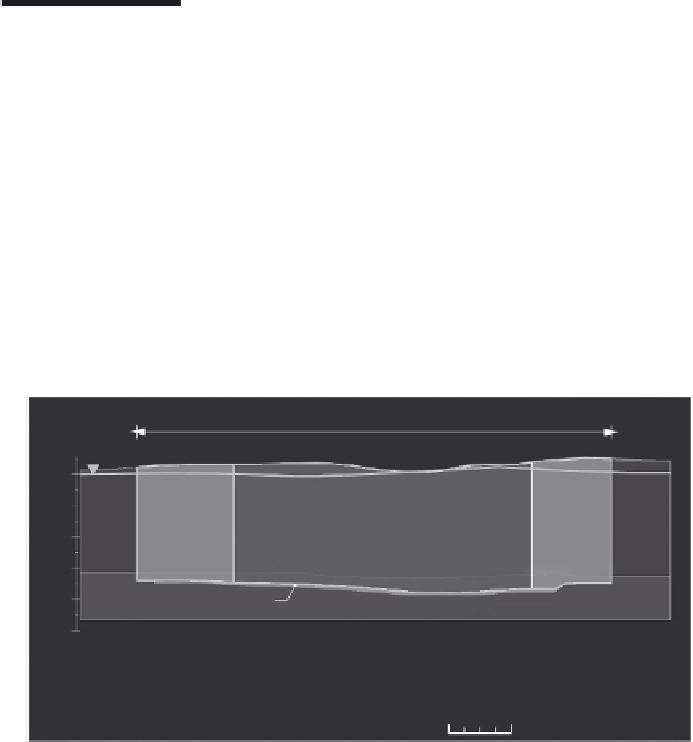Environmental Engineering Reference
In-Depth Information
As the difference between the sawdust and woodchips was not consistent,
it was decided to use a carbon source consisting of a variable combination of
pine sawdust and woodchips for the denitrification PRB. Owing to the pro-
duction methodology, a mixture of sawdust and woodchips is much easier to
source from local producers.
ETI recommended that consideration be given to retaining a section of nat-
ural aquifer between the denitrification PRB and the ZVI PRB as this could
act as a buffer and reduce the transport of TOC into the ZVI PRB and thereby
increase ZVI longevity. This recommendation was incorporated into the pre-
liminary design of the remediation system.
7.6 Implementation
The preliminary design included material specifications and minimum sizes
for both PRBs. A key preliminary design aspect of the ZVI PRB was the inclu-
sion of three panels within the ZVI PRB (Figure 7.9). The central main panel
(B) was designed to be 45 m long, which was long enough to treat the entire
width of the TCE plume with concentrations greater than 330 μg/L. The two
side panels (A and C) were designed to be 17 and 14 m long and have half the
amount of ZVI as the central panel. These side panels were included in the
design as a contingency measure in case of seasonal shifting of the plume
or the permeability of the ZVI PRB decreasing and potentially resulting in
flow diversion. A geotechnical investigation undertaken by Golder inferred
a clay layer in the upper portion of the Leederville Formation that would be
76 m
7.5
5.0
Panel
A
Panel
B
Panel
C
2.5
0.0
Transition zone
Inferred clay
-2.5
Leederville formation
-5.0
A
A'
Northeast
Southwest
0510 meters
FIGURE 7.9
Preliminary design of the ZVI PRB.

Search WWH ::

Custom Search